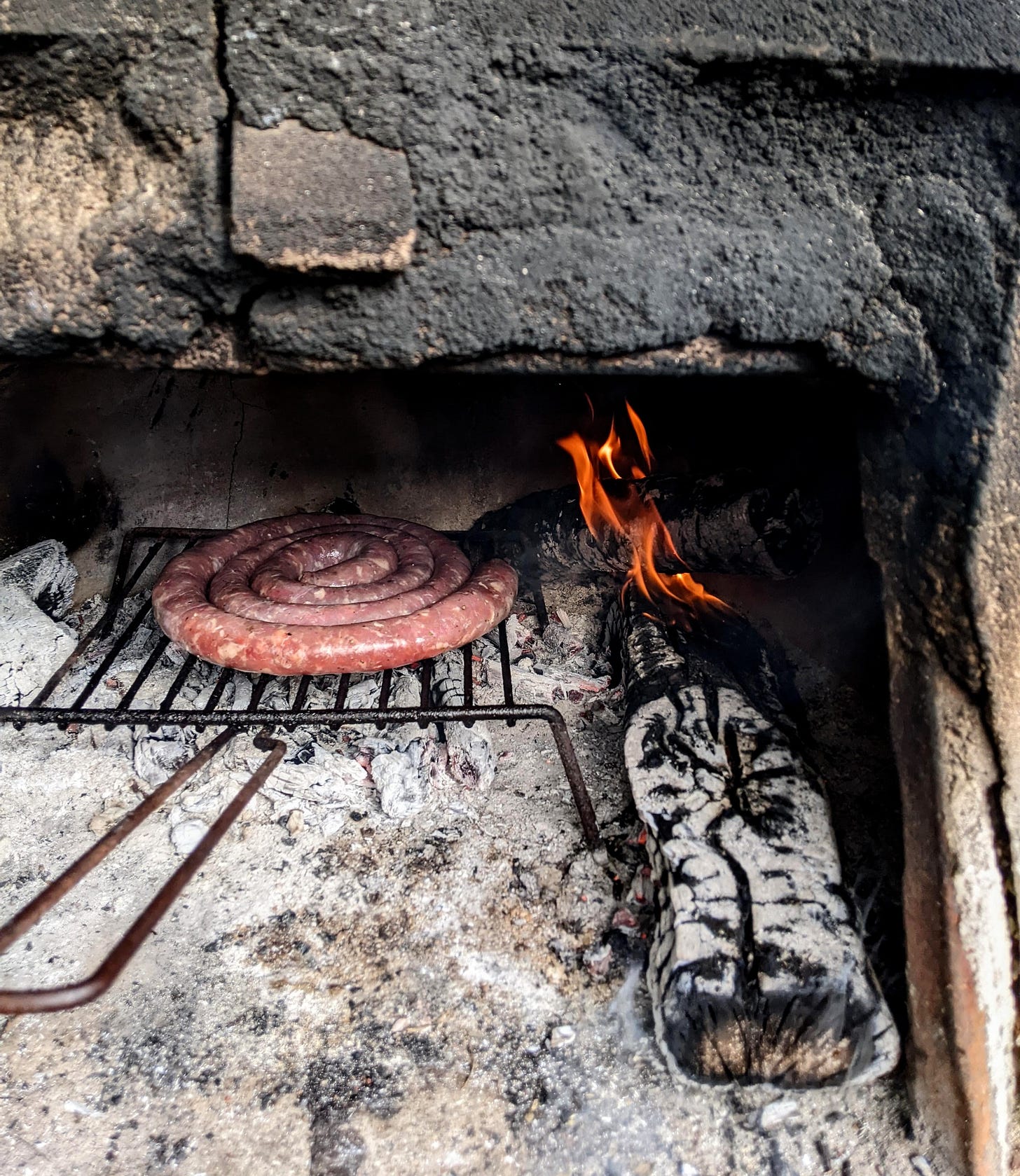We’re rounding second base here at Camont in the middle of our first “A Well Kept Pig” charcuterie workshop; sausages are cased, Noix de Jambon are salted and hung, carnitas are packed into their boats — everything is in its proper place.
While most of our projects take a few weeks or months to complete and ready themselves for consumption, there’s always the reliable Saucisse de Toulouse to jump in at a moment’s notice to quell a rumbling belly. This product, consisting of nothing more than pork (meat and fat - a well raised shoulder has the perfect proportion), salt, and pepper, is rarely linked and often wound into a pinwheel. While it may seem like this is an easy product, that couldn’t be further from the truth - when things are this simple and bare, there’s nowhere to hide your mistakes. Every component going into this product needs to be of the highest quality - selecting and trimming the pieces of meat for the grinder, freshly milling your black pepper, salt of the proper coarseness and origin. Further, one must treat the product correctly, mixing properly to create a myosin bond that is just the right level of bond without being too bouncy (no quarters here). Casing without air bubbles is critical as well, without overstuffing and creating opportunities for rupture. These are just a few of the manifold nuances that go into proper sausage production.
I always recommend seeing how the sausage is made.
To nail down the platonic ideal experience, we recommend grilling over coals from a hardwood fire or from grape vine clippings if it’s the proper season. In the photo above from a few days back, I’ve nestled our pinwheel in a very rustic clay oven that is perfectly suited to the task.
I’m sipping my coffee here (that needs a hello and a perk up, or HOT DROP as some say) at
’s grand salon table planning the details for rest of the charcuterie week. What’s on tap?Picking up the ‘green’ hams from the butcher today in the marché couvert in Agen. (Everyone is allowed two Green Eggs and Ham references per day.)
Shaping our hams into our desired shapes and styles, focusing on the local Jambon de Bayonne method.
Fabrication and creation of Saucisson Royale (air dried salami) using only the most desirable pieces of meat.
Creation of sidecar products such as Saucisse seche (a smaller diameter air dried sausage that is eaten more casually) and Jambon de Tonneins, a potted ham product.
Keep your eyes peeled for updates here and on our social accounts if you’d like to follow along!
If you’d like to join us next year, tickets for January are open for the next four weeks (cutoff is mid-November). If you have any questions regarding or would like to speak with me about payment options (or partial scholarships), don’t hesitate to reach out to me at nathan.c.gilmour@gmail.com or through the website.
In the meantime, I’ve gotta jump back into leading and producing this workshop, I think I hear the students’ cars pulling up now.
Catch you soon.





Nathan, meeting you in person and getting a taste (and smell!) of your charcuterie workshop is beyond fab!